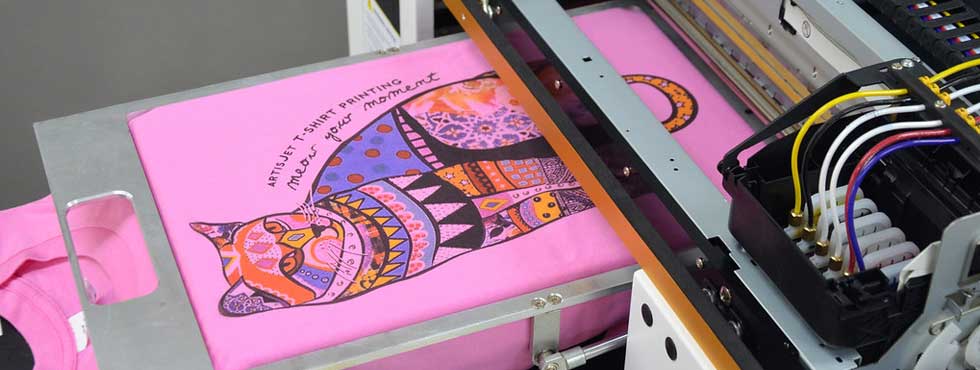DTF Printing Explained: A Beginner's Guide to Direct-to-Film Printing
The printing industry is rapidly growing, and with the inclusion of innovation and technology, more advancement has been noticed in the printing world. No doubt, Direct-to-film printing is a modern innovation in the realm of garment decoration and has revolutionized the way design is transferred onto the fabric. According to Google Trends and statistics, DTF printing has been in strong growth for the past 5 years and now has reached the new demand.

This advanced printing method offers numerous benefits to the printing solution. The use of a DTF printer allows you to print the tougher fabrics like polyester, fleece, nylon, and of course the cotton variant, which is hard to obtain from the traditional methods.
Direct-to-film printing is a heat transfer process that involves printing the design onto the DTF transfer film which is then covered with a thermo adhesive powder and by using the heat press transferred to the final substrate. Unlike the screen printing process, it uses the inkjet printer that ensures high-quality results by utilizing a garment printer for creating the design onto the fabric.
Read and learn more about DTF printing, exploring its technology, application, benefits, and future aspects in this comprehensive guide.
What is DTF Printing
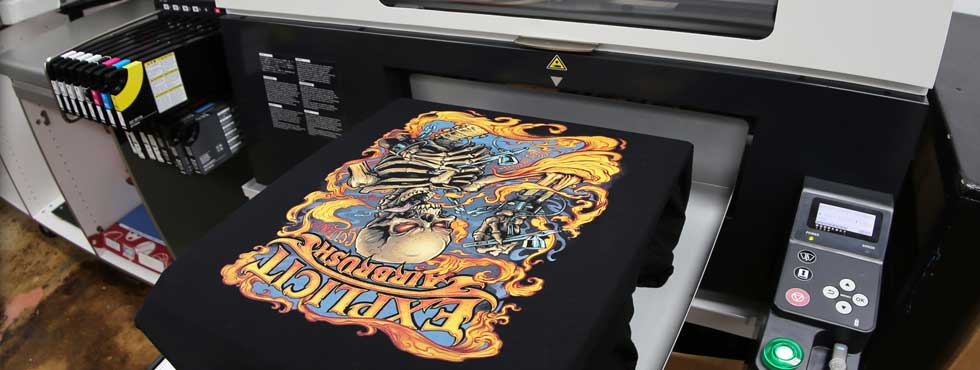
DTF printing meaning refers to the process that transfers the prints onto the fabric or on other substrates using water-based inks or a special adhesive powder. Then the design is heat transferred onto the surface of the garment. This printing method is durable and the design comes out vibrant or detailed. It also utilizes a specialized printer equipped with vibrant and durable UV inks to directly print the design onto the film.
Additionally, DTF printing technology allows you to print on a wide range of fabrics, and even DTF printers work on both dark and white colored fabric without any need for the expensive A & B paper for pressing.
Read also: What is Screen Printing & How Does It Work
Supplies Required For DTF Printing
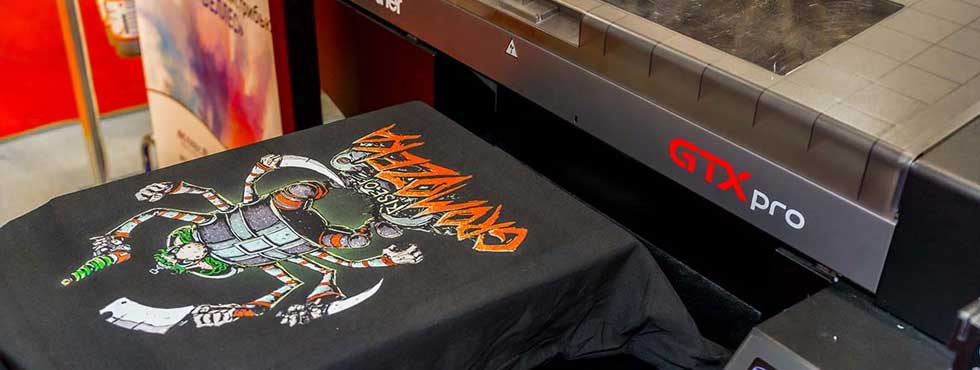
Direct-to-film transfers require specific supplies to ensure successful printing. Let's list the equipment and machinery required for the DTG printing.
-
DTF Printer:A specialized printer with vibrant and durable inks is required for directly printing the design onto the film.
-
Transfer Film:High-quality direct-to-film transfers are used as these are different from screen printing. These films have a thickness of approximately 0.75 ensuring high-quality print on the substrate. You can find them in the market for the small scale or even for the big commercial setup, available in two types: cold peel type and hot peel type.
-
Transfer Film:High-quality direct-to-film transfers are used as these are different from screen printing. These films have a thickness of approximately 0.75 ensuring high-quality print on the substrate. You can find them in the market for the small scale or even for the big commercial setup, available in two types: cold peel type and hot peel type.
-
DTF Printer Software:Software is considered the key element for color and design performance. And for the DTF specialized RIP software is required for handling the color consistency and for checking the critical factor for print quality.
-
Adhesive Powder:DTF printing uses white granular powder that acts as an adhesive that enables the design to adhere to the final substrate during the heat transfer process.
-
DTF Printer Inks:The ink used in DTF printers is designed in Cyan, Yellow, Magenta, White, and Black.
-
Heat Press:This equipment helps in transferring the printed design from the transfer film onto the fabric. It applies heat and pressure to ensure proper bonding.
How Much Does DTF Equipment Cost
Investing in the DTF equipment can be both cost-effective and lucrative. You can start the DTF printing with the initial of €1500 and can acquire the complete DTF printer kit including a high-quality A3 printer, RIP editor software, and all necessary consumables. This ket is the complete package where you can start easily.
Furthermore, you will also need a heat press or an oven to cure the ink onto the film. With the heat press, you may require the adjustable platen to ensure uniform curing across the printing surface. So, with this basic investment, you will be easily equipped to meet the demand of the customer with high-quality or customized print.
How does DTF printing work?
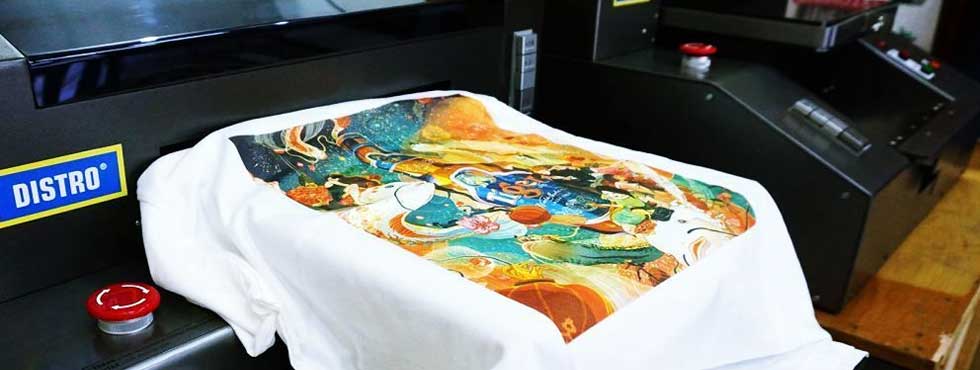
Direct-to-film printing is the modern digital technique of transferring the design onto fabric material such as polyester, cotton, or its blend.
Are you interested in how it works? Let's have a look at the printing process.
1. Preparation
In the first step, the design or the artwork of the pint is selected. This can be done using graphic software like Adobe Photoshop or other online available designing software.
2. Printing onto the Transfer Film
After the design is finished, a DTF printer is used to print it on the transfer film. This printer has a unique inkjet that applies ink on the film in the desired pattern or style.
3. Film Lamination
After that, the transfer film is laminated onto the heat-sensitive adhesive layer. This layer ensures the design is properly absorbed into the fabric during the transfer process.
4. Fabric Preparation
The fabric onto which the design will be transferred is pretreated by ensuring the fabric is clean and free from any contaminant that could interfere with the transfer process.
5. Heat Press Transfer
The fabric and the laminated transfer film are now placed on the heat press machine. The heat press applies both the heat and pressure to the fabric and the transfer film. This will ensure the design bond to the fabric surface.
6. Curing
To make sure the ink is well attached to the fabric, the fabric is put through a curing procedure following the transfer process. The fabric can be heated to a certain temperature for curing.
Applications of Direct-to-Film Printing
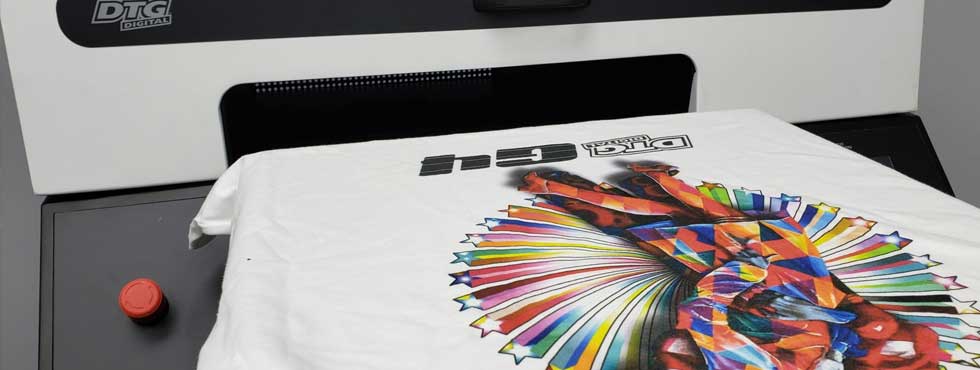
In the clothing industry, DTF printing is widely used to customize a variety of items, including jackets, hoodies, and t-shirts. It is frequently used to produce distinctive, eye-catching prints for clothing and accessories. It enables designers to experiment with intricate patterns, graphics, and personalized touch to the products.
-
T-shirts: It is one of the most common items designed by DTF printing. It can also print a variety of t-shirt types from school wear to sports or other organizations.
-
Pockets:Do you want print on your pockets? Well, printing on shirts is a common trend in the market, but printing on pockets is the hardest task. DTF printing makes it possible to get print on the target areas of the garment.
-
Hats: From baseball caps to trucker hats, DTF printing has the excellent capability to print different types of hats.
-
Printed Tags: Most companies are looking for the inside tags of the garment, and DTG is ideal to achieve it.
-
Bags: Direct-to-film prints are common on the bags, it can print tote bags, fanny packs, purses, or many other types of bags.
-
Other Fabric Type: There is no limitation of fabric items for DTF printing, it creates a number of garments and apparel without any need for extra equipment.
Comparison with other print methods
Choosing the right printing method makes it easier for you to achieve long-term business goals rather than the false one. So pay attention to the right printing method for your apparel, which depends upon various factors including fabric type, design, and quality. Here is the breakdown of how the DTF printing method is different from the direct-to-garment, Sublimation, and screen printing methods.
-
Direct-to-film vs sublimation printing
-
Direct-to-film vs DTG printing
-
Direct-to-film vs Screen Printing
DTF and sublimation printing are essential and powerful methods of achieving high-quality and long-lasting print. Meanwhile, sublimation printing has been renowned over the past few years and allows printing the whole garment with unique artwork.
Well, this printing technique takes a long time, and it also becomes difficult to get the result from sublimation printing. This process involves printing the design on special paper and then transferring it into the fabric using the heat press. However, this method is ideal for printing various materials including polymer-coated fabric and polyester blend fabric. Learn more about sublimation printing on our website.
Therefore, if you are looking to print on the complex or the blended fabric then DTF is the great choice. It is cost-effective and easily offers attention to detail-design with precision print.
The key difference between the two printing techniques is that the DTG printing method uses direct spraying of ink into the fabric. However, pretreating the fabric is necessary before printing a garment in order to guarantee that the ink sticks correctly; this can be an expensive and time-consuming procedure. Then, to improve the print quality, the water-based ink is sprayed onto the clothing, and the pattern is allowed to cure.
Additionally, DTG printing is mainly done on the cotton blend or in 100% cotton. So, if you are interested in cotton-based apparel then DTG is the way to go. In contrast, DTF can typically be done on various types of fabric. It also eliminates the need for pretreatment which ultimately saves time and money.
Read also: DTG Vs Screen Printing
Both methods are popular and bring excellent printing results. Screen printing is the widely used method that requires the screen or mesh stencil to push ink onto the fabric. In screen printing, a woven screen is needed for each color and design element, and the ink is sprayed on the surface rather than soaking into it. The screen-printed design can feel heavier than the other printing methods.
Plus, screen printing works best for a solid design without any need for other equipment. On the other hand, DTF printing works well with various materials and does not require a separate screen for the different colors. It also doesn't need any special equipment; it can easily be done with the transfer film, printing powder, or the heat press.
Read also: Screen printing vs digital printing
Pros
-
DTF printing offers versatility in printing on various types of fabric including polyester, fleece, nylon, or cotton variants. It can also print well on complex and non-textile fabrics such as wood, metal, and ceramics. Plus, it also brings excellent print on polos, sweatshirts, polos, or custom DTF shirt printing.
-
DTF printing produces vibrant and rich color ensuring high color print with excellent saturation and accuracy.
-
It also brings the detail and precise design to be reproduced accurately covering every single detail with the sustainability print.
-
Also, the prints created through DTF printing are durable and lasting, with the excellent ability to withstand multiple washes without fading or deteriorating.
-
DTF printing is relatively cost-effective compared to the screen printing method. Specifically DTF transfer can be more cost-effective for small to medium-sized print as it lowers the setup cost and efficient workflow.
-
DTF printing is relatively quick allowing for rapid production of print without compromising on quality.
Cons
-
The cost of personalizing DTF printing may be higher than the other printing methods.
-
The DTF printing process can be done in several steps including pretreatment, printing, and heat transfer, which requires some expertise and training for high-quality printing.
-
While DTF printing is suitable for a wide range of fabrics expect some specialty fabrics or blends which may require additional pretreatment or testing for the optimal result.
-
DTF printing may have certain limitations for producing certain colors accurately when compared to the other methods such as sublimation.
-
DTF printers also require regular maintenance to ensure optimal print quality.
Conclusion
In sum, direct-to-garment printing is a versatile printing method that can be used in making intricate or detailed designs that set it apart from traditional methods like screen printing, DTG, or the sublimation printing method. It also brings the excellent opportunity to print on a wide range of fabrics including polyester, nylon, blended fabric, or cotton.
As technology evolves, this versatile printing technique is poised to play a crucial role in fabric printing, ensuring the business can easily succeed with the DTF printing method. So, if you are looking for a printing technique that offers a high-quality dress without ignoring the design, then DTF is the way to go.
FAQs
How does the DTF differ from the other printing methods?
Yes, DTF printing is entirely different from screen printing, sublimation, or DTG printing. The DTF printing brings the vibrant and detailed print directly onto the fabric without the need for any additional transfer paper or treatments.
Is DTF printing durable?
DTF print typically lasts a long time with proper care. However, the prints are resistant to fading, cracking, and peeling even after multiple washes and retain their color and detail work, making them ideal for long-lasting wear or use.
Are there any limitations with DTF printing?
DTF printing brings numerous advantages but it may have limitations in producing certain colors and also requires the proper maintenance and care for optimal results.
What are the disadvantages of DTF printing?
DTF printing is ideal for the small design and the DTF printed apparel isn’t breathable on wear. This can result in discomfort especially when wearing for a long period.
